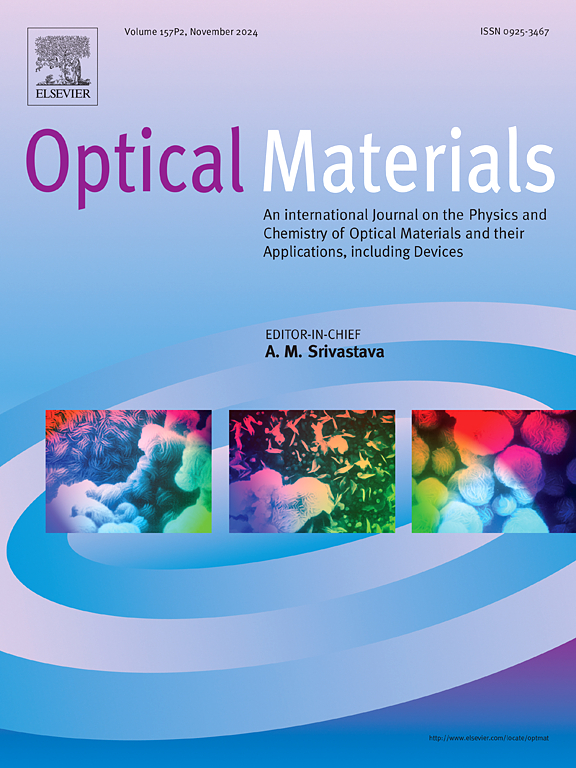A novel single-phase white-emitting garnet-structured phosphor with ultra-high luminescent thermal stability and color stability
IF 3.8
3区 材料科学
Q2 MATERIALS SCIENCE, MULTIDISCIPLINARY
引用次数: 0
Abstract
Currently, single-phase white-emitting phosphors have garnered significant attention in the field of phosphor-converted white light-emitting diodes (pc-WLEDs). Unfortunately, poor luminescent thermal stability has severely hindered the development of phosphors for solid-state lighting. In this study, to enhance the luminescent thermal stability of phosphors, and a series of NGGGO:Dy3+,Tm3+ phosphors were successfully synthesized via the high-temperature solid-state method. The effects of different doping concentrations on the crystal structure, luminescent spectrum, and thermal stability of the phosphors were thoroughly investigated. X-ray diffraction analysis revealed that all the phosphors maintained a garnet structure without the formation of any impurity phases. Photoluminescence spectra demonstrated that under excitation at 353 nm, the yellow emission of Dy3+ and the blue emission of Tm3+ achieved effective spectral complementarity, yielding white light emission with CIE coordinates of (0.329, 0.329). More importantly, the phosphor exhibited exceptional luminescent thermal stability, maintaining 96.21 % of its luminescent intensity at room temperature even at high temperatures (475 K). This study provided new insights for the development of efficient and thermally stable single-phase white-emitting phosphors, potentially advancing the technology of white LED lighting.
一种具有超高发光热稳定性和颜色稳定性的新型单相发白石榴石结构荧光粉
目前,单相白光荧光粉在磷光转换白光二极管(pc- wled)领域备受关注。不幸的是,较差的发光热稳定性严重阻碍了固态照明荧光粉的发展。本研究为提高荧光粉的发光热稳定性,通过高温固相法成功合成了一系列NGGGO:Dy3+、Tm3+荧光粉。研究了不同掺杂浓度对荧光粉晶体结构、发光光谱和热稳定性的影响。x射线衍射分析表明,所有荧光粉均保持石榴石结构,未形成任何杂质相。光致发光光谱表明,在353nm激发下,Dy3+的黄色发射与Tm3+的蓝色发射实现了有效的光谱互补,产生CIE坐标为(0.329,0.329)的白光发射。更重要的是,该荧光粉表现出优异的发光热稳定性,即使在高温(475 K)下,室温下也能保持96.21%的发光强度。该研究为开发高效、热稳定的单相白光荧光粉提供了新的见解,有可能推动白光LED照明技术的发展。
本文章由计算机程序翻译,如有差异,请以英文原文为准。
求助全文
约1分钟内获得全文
求助全文
来源期刊

Optical Materials
工程技术-材料科学:综合
CiteScore
6.60
自引率
12.80%
发文量
1265
审稿时长
38 days
期刊介绍:
Optical Materials has an open access mirror journal Optical Materials: X, sharing the same aims and scope, editorial team, submission system and rigorous peer review.
The purpose of Optical Materials is to provide a means of communication and technology transfer between researchers who are interested in materials for potential device applications. The journal publishes original papers and review articles on the design, synthesis, characterisation and applications of optical materials.
OPTICAL MATERIALS focuses on:
• Optical Properties of Material Systems;
• The Materials Aspects of Optical Phenomena;
• The Materials Aspects of Devices and Applications.
Authors can submit separate research elements describing their data to Data in Brief and methods to Methods X.
 求助内容:
求助内容: 应助结果提醒方式:
应助结果提醒方式:


